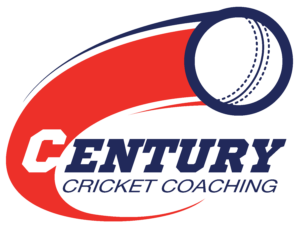Below, guest blogger and ACI Coach, Josh Nevett gives us his top 4 tips on the difference between a good and a great fast bowler.
As a player climbs the ranks of fast bowling, it becomes clear that the margin between a good and great fast bowler can be very small. This blog will look to help young fast bowlers bridge that gap and achieve their fast bowling goals.
1. YOUR BODY IS A TEMPLE
The harsh reality for any cricketer, but more specifically fast bowlers, is that progression is directly limited by the lack of a strong, healthy, and fit body. Skill with the ball is definitely vital, but the lack of a strong physical base to complement this will eventually result in a lesser ability to bowl long spells, more difficulty focusing over the course of a bowling day, longer required recovery periods for future training/matches and the more regular occurrence of injury. These inhibiting factors don’t even include the limits that poor physical condition places on increasing bowling speed, which is what most fast bowlers desperately pursue!
Some of the physical requirements of great fast bowlers are as follows:
- Cardiovascular endurance
- Muscular endurance
- Muscular power and flexibility
Gains in these areas are made through consistent cardiovascular training (running, cycling, swimming), gym-based strength programs (weights), and flexibility training (yoga, stretching). In addition to such training, a balanced diet and healthy sleeping habits will maximise the results gained from sessions.
2. BOWLING TO PLANS - MATCHING THE BRAIN WITH THE BRAWN
Having the ability to bowl 140km/h and swing the ball both ways is enviable, but without carefully formulated bowling plans often the most highly regarded bowling skills go to waste. All of the great fast bowlers have multiple specific plans that they can call upon to focus their bowling in a variety of different situations.
For example, an express quick may seek to utilise their pace by integrating short balls into their overs with both close and deep catching fielders on the legside to support this. A swing bowler may look to construct an over so that they swing the ball away from the batter for the first few balls before delivering a ball that swings into the stumps to target a bowled or LBW dismissal.
Bowling plans require an understanding of the balls you want to bowl, the shots you want a batter to play, the dismissals you are aiming for, and then matching up field placements to complement this. As previously mentioned, it is best to have multiple plans available in order to combat different styles of batting. These plans should play to your individual strengths.
When you ‘just run in and bowl’, you are more prone to emotions and external factors impacting your performance negatively, so plans are essential to narrowing your focus and creating a blueprint that you have full confidence in on matchday.
3. EMBRACING CHALLENGES - WANT THE BALL
Bowlers will face the full spectrum of bowling conditions over the course of their playing days. There will be days where the pitch is green and skies are overcast, and others where the opposition are 0/200 on a flat pitch under the boiling sun. Regardless of this, truly great bowlers will consistently show the passion, confidence, and resilience to want the ball in all game situations, embracing challenges as a growth opportunity.
By shying away from tough scenarios where taking wickets or limiting runs is less than likely, bowlers cost themselves the learnings that are required to tackle the same situation when it inevitably reoccurs in the future. Hopefully, after reading this you put some consideration into developing bowling plans. Tough, pressure-laden match situations are the perfect time to use these plans.
Furthermore, many of the best bowlers are picked on their ability to execute in tough situations alone e.g. specialist death bowlers and specialist middle overs bowlers. Most of the time, these players don't receive much assistance from the conditions or opposition, but they play a vital role in the team sport that is cricket.
In conclusion, approaching all bowling situations with a positive attitude and clear focus will ensure that you get the most out of yourself as a fast bowler.
4. PREPARING TO PERFORM - TRAIN WITH PURPOSE
Training habits are a key area that contributes to the 5-10% difference between good and great fast bowlers. Let’s paint a picture of the key differences.
A good fast bowler will go to training on time, bowl a large load of overs, perhaps take some wickets in the nets, and bowl in good areas. But, they also may be bowling 2ft no-balls without considering proper routines. Perhaps they are going against the principle of avoiding ‘just run in and bowl’. If you were to sum it up, they train without purpose. The consequence of this is that training becomes a practice of maintaining rhythm and fitness rather than pursuing genuine improvement.
On the other hand, great fast bowlers approach every session with a clear focus. Whether it's trialing a new bowling plan, honing in the accuracy of a new variation ball, or addressing a delivery stride technical flaw, there is always a goal that is geared towards improvement. In order to achieve this, great fast bowlers also aren’t afraid of asking their coaches and teammates questions, a habit that reaps the benefits of multiple experienced opinions.
Article Author: Josh Nevett
ACI Academy Coach


